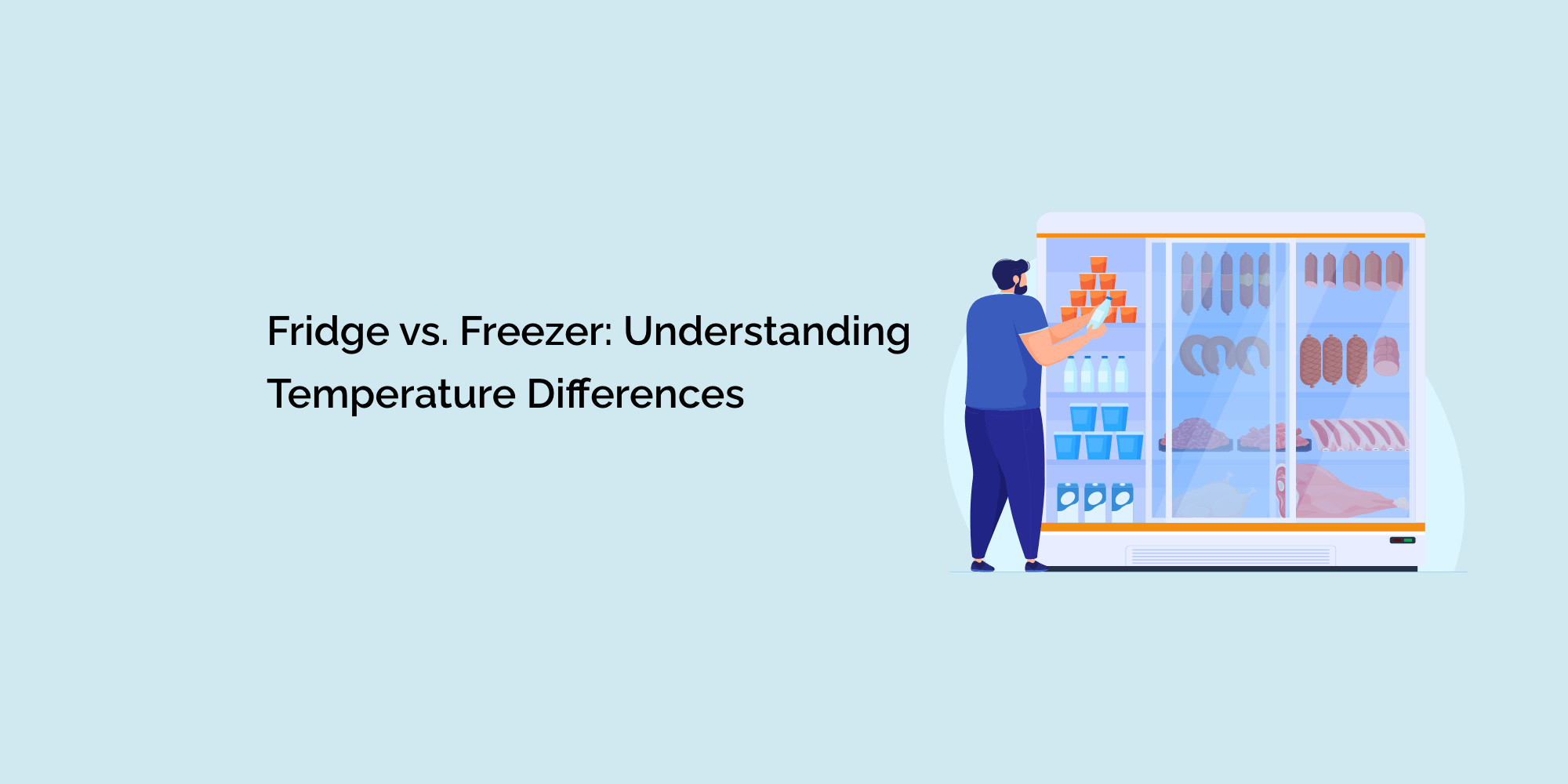When it comes to food storage and preservation, temperature control is paramount. In most households, two essential appliances handle this task: the refrigerator and the freezer.
While both serve the common purpose of keeping your perishable items fresh, they operate at different temperature ranges, each optimized for specific functions.
In this comprehensive guide, we'll delve into the differences between fridges and freezers, their respective temperature requirements, and the crucial role they play in maintaining food safety and quality.
1: The Basics of Refrigeration
1.1 The Refrigerator's Role
A refrigerator, often referred to as a fridge, operates at temperatures typically between 34°F to 40°F (1°C to 4.4°C). Its primary function is to slow down bacterial growth and preserve perishable foods such as fruits, vegetables, dairy products, and leftovers. These temperatures are just above freezing and inhibit bacterial activity while keeping food cold enough to maintain freshness.
1.2 Ideal Storage in the Fridge
Explore how different types of food should be stored in the fridge to maximize freshness and prevent cross-contamination. Cover topics like the crisper drawer for vegetables, meat storage, and the importance of proper packaging.
1.3 Food Safety in the Fridge
Discuss the significance of maintaining the correct fridge temperature to ensure food safety. Highlight the risks of storing food above 40°F (4.4°C), including bacterial growth and foodborne illnesses.
2: The Freezer's Frigid Domain
2.1 The Freezer's Purpose
Contrast the refrigerator's temperature range with the freezer's much colder environment, typically set at 0°F (-18°C) or lower. The primary role of the freezer is to freeze food and keep it in suspended animation, preventing spoilage and maintaining food quality over extended periods.
2.2 Ideal Storage in the Freezer
Explain how the freezer is best utilized for freezing raw ingredients, cooked meals, and other items like ice cream and frozen vegetables. Emphasize the importance of airtight packaging to prevent freezer burn.
2.3 Food Safety in the Freezer
Discuss how extremely low temperatures in the freezer effectively halt bacterial growth, preserving food for months or even years. Highlight the key role freezers play in reducing food waste by allowing users to store surplus items safely.
3: Temperature Control and Maintenance
3.1 Fridge Temperature Control
Explain how modern refrigerators come equipped with adjustable thermostats that allow users to fine-tune the fridge's internal temperature. Offer guidance on setting and monitoring the ideal fridge temperature to maintain freshness.
3.2 Freezer Temperature Control
Describe how freezers typically have a single temperature control dial to adjust the freezer's internal temperature. Provide insights into the ideal freezer temperature range and the importance of regular defrosting.
3.3 Maintenance Tips
Offer practical maintenance tips for both refrigerators and freezers. Discuss tasks like cleaning coils, checking door seals, and organizing items to optimize airflow and efficiency.
4: When to Use Each Appliance
4.1 Fresh vs. Frozen: Choosing Wisely
Guide readers on when to use the fridge and when to utilize the freezer. Address common scenarios, such as storing leftovers, preserving raw meat, and extending the shelf life of seasonal produce.
4.2 Storing Specific Items
Provide a detailed breakdown of which food items are best suited for fridge storage and which benefit from freezing. Include tips on how to package and label items for easy identification.
5: The Future of Food Preservation
5.1 Technological Advances
Discuss emerging technologies and innovations in refrigeration and freezing, such as smart appliances that optimize temperature control and reduce energy consumption.
5.2 Sustainable Solutions
Explore the importance of sustainable food storage practices, including reducing food waste, choosing energy-efficient appliances, and adopting eco-friendly packaging options.
Conclusion:
Striking the Temperature Balance
In conclusion, understanding the temperature differences between your fridge and freezer is essential for effective food storage and preservation. While the fridge keeps your perishables fresh, the freezer extends the shelf life of items by keeping them frozen.
By maintaining the right temperatures in both appliances and following proper storage guidelines, you can reduce food waste, save money, and enjoy safe, high-quality meals for an extended period.
As technology continues to advance and sustainability becomes increasingly important, making informed choices about food storage will become even more critical for households and the environment.








